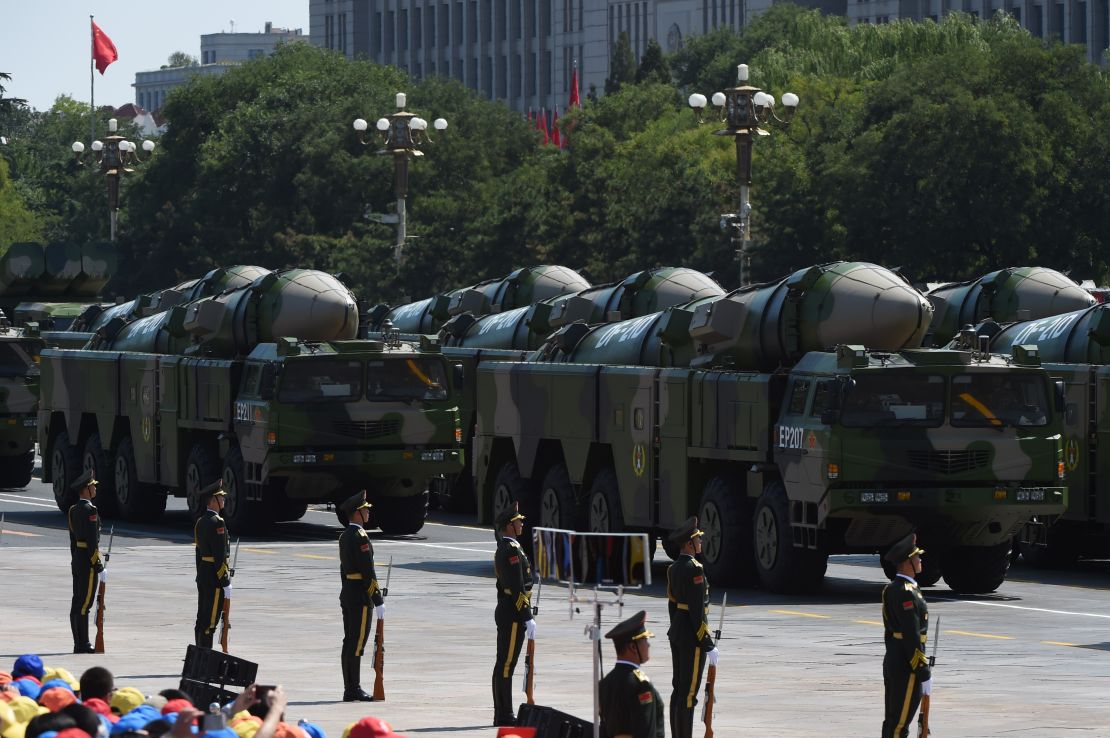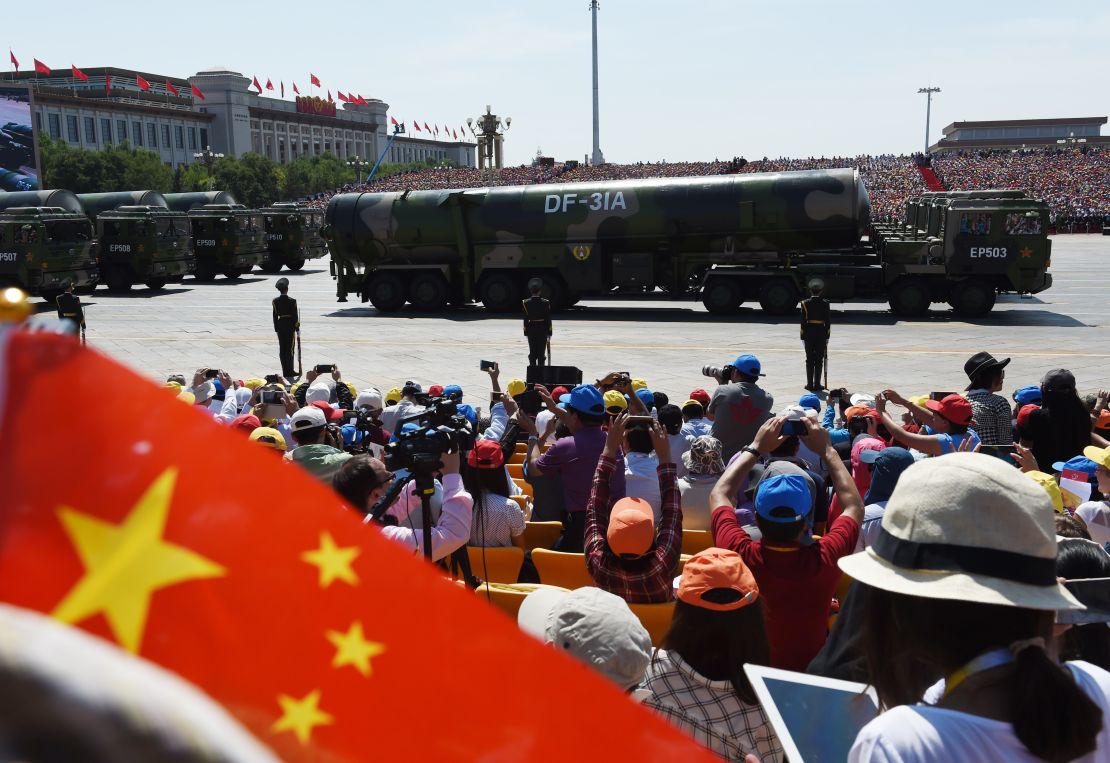Editor’s Note: Jon Grevatt is the Asia Pacific defense industry analyst for IHS Aerospace, Defense and Security. Jon has been based in Asia for the past 10 years writing assessments and analysis of rapidly developing regional defense markets.
Story highlights
Parade showcases China's defense industry
Several missiles shown in public for first time, including "carrier-killer"
But China still has a way to go to compete with global best
The neat rows of clearly marked missile systems that wound their way through Beijing Thursday as part of a massive military parade underscore the rapid development of China’s indigenous defense industry.
Notable missiles on display for the first time included the DF-21D “carrier-killer” anti-ship ballistic missile, the DF-15B short-range ballistic missile, medium-range ballistic missiles such as the DF-16 and DF-21C, intermediate-range ballistic missiles such as the DF-26, DF-5B and DF-31A, and the DF-10 land attack cruise missile.
In theory, these systems enable China to deliver warheads of varying power to predetermined targets, providing a strategic deterrent against any rival.

And while actual capability cannot be verified from the parade, analysts agree that the contours and dimensions of the weapons on display suggest that China’s defense industry is fast becoming a leading missile producer.

Gaps remain
Gaps in capability remain – most notably in the development of some sophisticated electronic systems and sufficiently reliable and powerful propulsion systems – but China’s defense industry is now producing warships and submarines, land systems and aircraft that provide the Chinese armed forces with a capability edge over most militaries operating in the Asia-Pacific.
Where indigenous capability still falls short, China procures from Russia and, until local industry eventually bridges the gap, it hopes that quantity will overcome quality.
Highlighting shortfalls, China’s 2015 Defense White Paper called for “independent innovation” and the “sustainable development” of advanced weaponry and equipment.
High investment from the state and policies that encourage Chinese companies to access technology from foreign companies (often U.S. corporations) operating in China’s commercial sectors support the development of China’s defense industry.
However, the industry needs to become more efficient: eradicate areas of duplication, fragmentation, ineffective production methods, and antiquated controls that thwart entrepreneurship.
The myriad enterprises involved in developing jet engines, for example, is only likely to have hindered advances.

Private sector expansion
China also wants to promote the growth of the private sector, and to encourage state-owned defense corporations to list assets on Chinese stock exchanges to boost accountability, innovation and respond quicker to market demands.
Leveraging of commercial technologies for defense industrial gains is referred to by analysts as China’s civil-military integration (CMI) policy.
Partly in response to Western arms sanctions, the CMI strategy aims to transfer applicable dual-use technologies and techniques from commercial sectors to military programs.
China’s lucrative commercial aerospace sector has been a major facilitator of the CMI program and is thought to have provided China’s defense industry with technologies related to radar-absorbent material, avionics, system integration techniques and flight controls.
Long way to go
However, there’s still a way to go for China’s defense industry to close the gap with the world’s leading military manufacturers.
To date, progress on industrial restructuring has been slow and China’s defense industry, particularly research and development, remains fragmented and inefficient.
Only a portion of the thousands of defense corporation subsidiaries have been listed, merged or consolidated. The CMI strategy too has failed to overcome lingering technological gaps, resulting in continuing dependency on Russia.
Xi Jinping’s administration has recognized the problems and has introduced several policies intended to spur advances in the state-owned sector that has found it difficult to break some technological barriers despite developments in areas such as missiles.
However, the main impediment that needs to be overcome is the lack of an overarching body to promote cohesion and integration with national procurement and geopolitical strategies.
Other obstacles relate to the non-competitive nature of defense contracting, which has led to the evolution of China’s monopolistic state-run defence corporations, which face little – if any – competition and, accordingly, remain largely inefficient.
That said, the advances made by China’s defense industry over the past decade have been extraordinary.
While rapid development over the coming decade will be difficult to achieve, China – as demonstrated by Thursday’s parade – remains on course to become one of the world’s leading military manufacturers.
